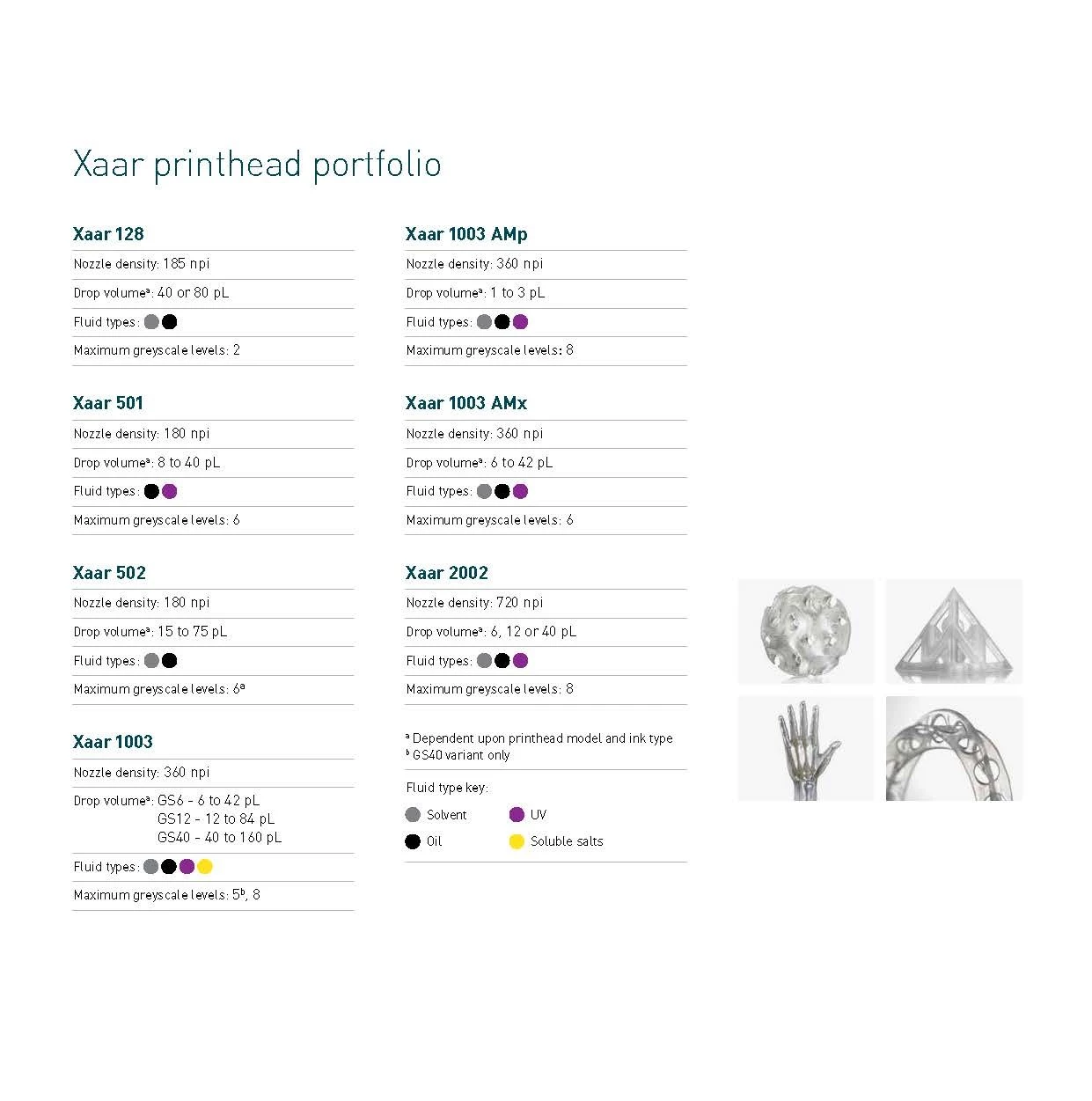Photopolymer Jetting (PPJ)
The most common material jetting process works by depositing droplets of material onto a build bed platform, which are then cured using a UV light source. This repeats layer-by-layer, until you are left with the finished 3D object.
Desirables in the PPJ sector include parts with superior mechanical properties, which requires viscous fluids, and parts with richer colours, which needs fluids with high pigment loading. These are traditionally challenging aspects for inkjet, but Xaar’s technology allows for this to be achieved.
- Xaar’s High Laydown (HL) Technology facilitates the printing of highly viscous fluids, whilst also enabling outstanding rates of productivity
- Xaar’s TF Technology ensures a continuous ink flow at a high rate directly past the back of the nozzle, preventing sedimentation in highly loaded inks, as well as carrying away air bubbles and keeping nozzles primed.
Larger bed sizes are key for achieving high rates of productivity, with the need to retain the ability to produce fine-featured, highly detailed parts.
- Xaar’s technology is fully scalable, which enables the integration of multiple printheads for single pass printing over large build bed areas
- Greyscale operation allows the jetting of variable drop volumes, whilst the capability to swap between high laydown and standard printing delivers high throughput or high resolution jetting.
Binder jetting
The binder jetting process works by depositing an agent onto a powder substrate, which binds the powder particles together. Another layer of powder is applied, and the process repeats until the 3D object is complete. Both polymer and metal powders are widely used, and in the case of the former, no support structures are generally required.
Challenging fluids that can damage less robust printheads are commonly used in binder jetting to achieve suitable part properties, with aqueous, particle-filled and high pH fluids common.
- Xaar’s robust printheads are compatible with a broad range of ink types, with the launch of printheads suitable for aqueous and high pH fluids further expanding this capability, and meaning minimal compromise on fluid choice for an OEM
- Xaar’s TF Technology ensures a continuous ink flow at a high rate directly past the back of the nozzle, removing air bubbles and preventing sedimentation in highly loaded inks.
- Larger parts are a common requirement for the industrial end-users of print and bind, with productivity also being essential. Xaar’s technology is fully scalable, which enables the integration of multiple printheads for single pass printing over large build bed areas.
High Speed Sintering
Enabled by inkjet technology, mass production 3D Printing is now a reality
High Speed Sintering works by depositing a fine layer of powder onto the surface of a powder bed, an inkjet printhead then selectively prints an infrared (IR) absorbing fluid directly on to the powder surface. The entire surface is irradiated with IR energy causing only the printed areas to melt/sinter, the unprinted areas remain as powder. This process is repeated layer by layer until the build is complete, un-sintered powder is then removed to reveal the final part(s).











